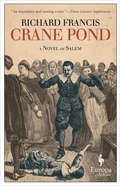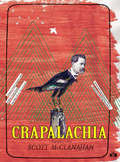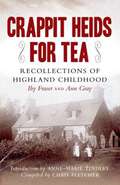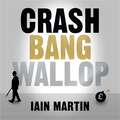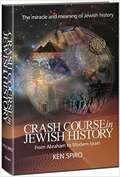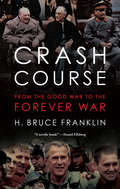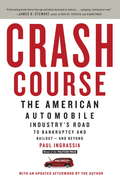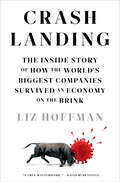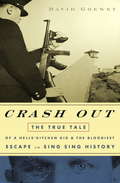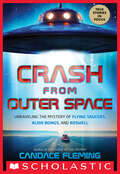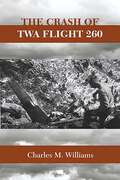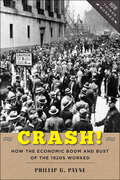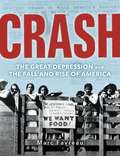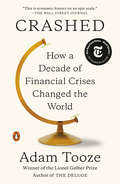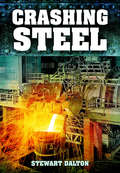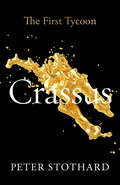- Table View
- List View
Cranbury: Volume II
by Peggy S. Brennan Frank J. Brennan Jr.One of New Jersey's oldest and most historic communities, Cranbury celebrated its 300th anniversary in 1997. Following the fantastic reception of Cranbury, an Images of America publication released in 1995, authors Peggy S. and Frank J. Brennan Jr. have developed the rich heritage of this community further in a marvelous second volume. The Brennans, Cranbury residents, reviewed more than 400 photographs to produce this vivid and thoroughly researched companion to the first book. They invite you to view the homes, churches, and public buildings that reflect a bygone era and discover the people, places, and events that contributed to life in Cranbury from the early nineteenth century through 1975. With its tree-lined Main Street and white, clapboard homes, old Cranbury brings to mind a simpler way of life in a younger, simpler America.
Crane Pond: A Novel of Salem
by Richard FrancisThis novel of the Salem Witch Trials from the point of view of a judge is &“leavened with wit [and] finely crafted&” (Kirkus Reviews). In a colony struggling for survival, in a mysterious new world where infant mortality is high and sin is to blame, Samuel Sewall is committed to being a loving family man, a good citizen, and a fair-minded judge. Like any believing Puritan, he agonizes over what others think of him, while striving to act morally correct, keep the peace, and, when possible, enjoy a hefty slice of pie. His one regret is that months earlier, he didn&’t sentence a group of pirates to death. What begins as a touching story of a bumbling man tasked with making judgments in a society where reason is often ephemeral quickly becomes the chilling narrative we know too well. And when public opinion wavers, Sewall learns that what has been done cannot be undone. Crane Pond explores the inner life of a well-meaning man who compromised with evil and went on to regret it. At once a searing view of the Trials, an empathetic portrait of one of the period&’s most tragic figures, and an indictment of the malevolent power of idealism, it is a thrilling new telling of one of America&’s founding stories. &“[Crane Pond] goes straight on to my (small) list of historical novels that draw out the capacities of the form and allow readers to brush against the pleasures and terrors of the past.&” —Hilary Mantel, author of Wolf Hall &“Deftly crafted . . . perfectly balances issues of religion, faith, and law.&” —Library Journal
Cranford: Large Print
by Elizabeth GaskellThe women of an English country village star in this Victorian classic that inspired a BBC series, from the author of North and South. Welcome to Cranford, where everyone knows one another and a cow wears pajamas. It&’s a community built on friendship and kindness, where women hold court and most of the houses—and men—are rarely seen. Two colorful spinster sisters at the heart of Cranford, Miss Matty and Miss Deborah Jenkyns, are daughters of the former rector, and when they&’re not playing cards or drinking tea, they&’re feeding an endless appetite for scandal and weathering commotions to their peaceful lives, from financial troubles to thieves to an unexpected face from the past. First published in installments in Household Words, a magazine edited by Charles Dickens, Cranford was a hit of its time and today offers modern readers a glimpse into a small English town during the mid-nineteenth century.
Cranioklepty
by Colin DickeyThe after-death stories of Franz Joseph Haydn, Ludwig Beethoven, Swedenborg, Sir Thomas Browne and many others have never before been told in such detail and vividness.Fully illustrated with some surprising images, this is a fascinating and authoritative history of ideas carried along on the guilty pleasures of an anthology of real-after-life gothic tales.Beginning dramatically with the opening of Haydn's grave in October 1820, cranioklepty takes us on an extraordinary history of a peculiar kind of obsession. The desire to own the skulls of the famous, for study, for sale, for public (and private) display, seems to be instinctual and irresistible in some people. The rise of phrenology at the beginning of the 19th century only fed that fascination with the belief that genius leaves its mark on the very shape of the head.
Crap: A History of Cheap Stuff in America
by Wendy A. WolosonCrap. We all have it. Filling drawers. Overflowing bins and baskets. Proudly displayed or stuffed in boxes in basements and garages. Big and small. Metal, fabric, and a whole lot of plastic. So much crap. Abundant cheap stuff is about as American as it gets. And it turns out these seemingly unimportant consumer goods offer unique insights into ourselves—our values and our desires. In Crap: A History of Cheap Stuff in America, Wendy A. Woloson takes seriously the history of objects that are often cynically-made and easy to dismiss: things not made to last; things we don't really need; things we often don't even really want. Woloson does not mock these ordinary, everyday possessions but seeks to understand them as a way to understand aspects of ourselves, socially, culturally, and economically: Why do we—as individuals and as a culture—possess these things? Where do they come from? Why do we want them? And what is the true cost of owning them? Woloson tells the history of crap from the late eighteenth century up through today, exploring its many categories: gadgets, knickknacks, novelty goods, mass-produced collectibles, giftware, variety store merchandise. As Woloson shows, not all crap is crappy in the same way—bric-a-brac is crappy in a different way from, say, advertising giveaways, which are differently crappy from commemorative plates. Taking on the full brilliant and depressing array of crappy material goods, the book explores the overlooked corners of the American market and mindset, revealing the complexity of our relationship with commodity culture over time. By studying crap rather than finely made material objects, Woloson shows us a new way to truly understand ourselves, our national character, and our collective psyche. For all its problems, and despite its disposability, our crap is us.
Crapalachia
by Scott McClanahanWhen Scott McClanahan was fourteen he went to live with his Grandma Ruby and his Uncle Nathan, who suffered from cerebral palsy. <P><P>Crapalachia is a portrait of these formative years, coming-of-age in rural West Virginia. <P>Peopled by colorful characters and their quirky stories, Crapalachia interweaves oral folklore and area history, providing an ambitious and powerful snapshot of overlooked Americana.
Crappit Heids for Tea: Recollections of Highland Childhood
by Ann Gray Iby FraserIn this memoir, the daughter of one of the first keeper&’s of Scotland&’s Shinness Estate details life in the early 20th century Scottish Highlands. Sutherland is one of the most ruggedly beautiful and sparsely populated parts of Scotland. In the nineteenth century, the Duke of Sutherland set about improving his landholdings to make them more productive by building lodges for sporting tenants who came to enjoy the summer fishing and shooting grouse and deer. In the 1870s some 3,000 acres of land were reclaimed at Shinness. A lodge was built there in 1882 and allocated some 2,500 acres of moorland for grouse and grazing, together with the fishings on Loch Shin and its rivers. One of the first keepers at the estate was John Fraser. His daughter, Iby, became a teacher at Lairg School. In the 1970s, long after the Fletcher family had taken on Shinness Estate, Iby wrote down some recollections of her early life for Mrs. Fletcher's interest. This charming book offers insightful descriptions of everyday life—from cooking, framing, and game keeping to medicine, schooling, and childhood games—as well as of the events that had a profound effect on communities everywhere, including the emergence of the motor car and World War I. Several other local contemporaries also contribute their memories, including Ann Gray, the daughter of the farmer who took on the reclaimed land in the 1880s, and Jimmy Bain, a crofter born after the Great War.
Crash Bang Wallop: The Inside Story of London's Big Bang and a Financial Revolution that Changed the World
by Iain MartinPublished to mark the 30th anniversary of the financial revolution known as 'Big Bang', Crash Bang Wallop will tell the gripping story of how the changes introduced in the 1980s in the City of London transformed our world.Attitudes to money and the way we measure value and status were completely reshaped by Big Bang, and it had an extraordinary impact on politics, on style, on technology, on the class system, on questions of public ownership, and on the geography of London. Perhaps more than anything, Big Bang revolutionised the international markets, as the capital became a testing ground for financial globalisation, with huge repercussions for the global economy. The definitive insider's account of this critically important moment in modern history, Crash Bang Wallop will also explore what's next for global finance as it gets ready to undergo yet another revolution. 'Iain Martin tells it brilliantly, mixing fury-inducing narrative with an acute eye for the broader conclusion.' Observer
Crash Bang Wallop: The Inside Story of London's Big Bang and a Financial Revolution that Changed the World
by Iain MartinPublished to mark the 30th anniversary of the financial revolution known as 'Big Bang', Crash Bang Wallop will tell the gripping story of how the changes introduced in the 1980s in the City of London transformed our world.Attitudes to money and the way we measure value and status were completely reshaped by Big Bang, and it had an extraordinary impact on politics, on style, on technology, on the class system, on questions of public ownership, and on the geography of London. Perhaps more than anything, Big Bang revolutionised the international markets, as the capital became a testing ground for financial globalisation, with huge repercussions for the global economy. The definitive insider's account of this critically important moment in modern history, Crash Bang Wallop will also explore what's next for global finance as it gets ready to undergo yet another revolution. 'Iain Martin tells it brilliantly, mixing fury-inducing narrative with an acute eye for the broader conclusion.' Observer(P)2016 Hodder & Stoughton
Crash Bang Wallop: The Inside Story of Londons Big Bang and a Financial Revolution that Changed the World
by Iain MartinPublished to mark the 30th anniversary of the financial revolution known as 'Big Bang', Crash Bang Wallop will tell the gripping story of how the changes introduced in the 1980s in the City of London transformed our world.Attitudes to money and the way we measure value and status were completely reshaped by Big Bang, and it had an extraordinary impact on politics, on style, on technology, on the class system, on questions of public ownership, and on the geography of London. Perhaps more than anything, Big Bang revolutionised the international markets, as the capital became a testing ground for financial globalisation, with huge repercussions for the global economy. The definitive insider's account of this critically important moment in modern history, Crash Bang Wallop will also explore what's next for global finance as it gets ready to undergo yet another revolution. 'Iain Martin tells it brilliantly, mixing fury-inducing narrative with an acute eye for the broader conclusion.' Observer
Crash Boat: Rescue and Peril in the Pacific During World War II
by George D. JepsonAfter the Japanese attacked Pearl Harbor on December 7, 1941, young Americans lined up at recruiting stations across the nation. Crash Boat is the compelling story of an armed United States air-sea rescue boat crewed by volunteers during World War II in the South Pacific. Only months earlier, they had been civilians, living the best years of their lives. In the Pacific, they conducted dramatic rescues of downed pilots and clandestine missions off of enemy-held islands at great peril and with little fanfare. George D. Jepson chronicles these ordinary young men doing extraordinary things, as told to him by Earl A. McCandlish, commander of the 63-foot crash boat P-399. Nicknamed Sea Horse, the vessel and her crew completed over thirty rescues at sea, weathered typhoons, fought a fierce gun battle with Japanese forces, experienced life from another age in isolated native villages, carried out boondoggle missions, and played a supporting role in America&’s return to the Philippines.
Crash Course in Jewish History: From Abraham to Modern Israel
by Ken SpiroThe Miracle and Meaning of Jewish History. Crash Course in Jewish History from Abraham to Modern Israel
Crash Course: From the Good War to the Forever War (War Culture)
by H. Bruce FranklinGrowing up during the Second World War, H. Bruce Franklin believed what he was told: that America’s victory would lead to a new era of world peace. Like most Americans, he was soon led to believe in a world-wide Communist conspiracy that menaced the United States, forcing the nation into a disastrous war in Korea. But once he joined the U.S. Air Force and began flying top-secret missions as a navigator and intelligence officer, what he learned was eye-opening. He saw that even as the U.S. preached about peace and freedom, it was engaging in an endless cycle of warfare, bringing devastation and oppression to fledgling democracies across the globe. Now, after fifty years as a renowned cultural historian, Franklin offers a set of hard-learned lessons about modern American history. Crash Course is essential reading for anyone who wonders how America ended up where it is today: with a deeply divided and disillusioned populace, led by a dysfunctional government, and mired in unwinnable wars. It also finds startling parallels between America’s foreign military exploits and the equally brutal tactics used on the home front to crush organized labor, antiwar, and civil rights movements. More than just a memoir or a history book, Crash Course gives readers a unique firsthand look at the building of the American empire and the damage it has wrought. Shocking and gripping as any thriller, it exposes the endless deception of the American public, and reveals from inside how and why many millions of Americans have been struggling for decades against our own government in a fight for peace and justice.
Crash Course: The American Automobile Industry's Road to Bankruptcy and Bailout--and Beyond
by Paul IngrassiaWith an updated Afterword by the author. This is the epic saga of the American automobile industry's rise and demise, a compelling story of hubris, missed opportunities, and self-inflicted wounds that culminates with the president of the United States ushering two of Detroit's Big Three car companies--once proud symbols of prosperity--through bankruptcy. With unprecedented access, Pulitzer Prize winner Paul Ingrassia takes us from factory floors to small-town dealerships to Detroit's boardrooms to the White House. Ingrassia answers the big questions: Was Detroit's self-destruction inevitable? What were the key turning points? Why did Japanese automakers manage American workers better than the American companies themselves did? Complete with a new Afterword providing fresh insights into the continuing upheaval in the auto industry--the travails of Toyota, the revolving-door management and IPO at General Motors, the unexpected progress at Chrysler, and the Obama administration's stake in Detroit's recovery--Crash Course addresses a critical question: America bailed out GM, but who will bail out America?
Crash Landing: The Inside Story of How the World's Biggest Companies Survived an Economy on the Brink
by Liz HoffmanA kaleidoscopic account of the financial carnage of the pandemic, revealing the fear, grit, and gambles that drove the economy&’s winners and losers—from a leading business reporter&“A true masterwork . . . perceptive, well researched, and captivating.&”—David M. Rubenstein, co-founder and co-chairman of The Carlyle Group, bestselling author of How to InvestIt was the ultimate test for CEOs, and almost none of them saw it coming. In early March 2020, with the Dow Jones flirting with 30,000, the world&’s biggest companies were riding an eleven-year economic high. By the end of the month, millions were out of work, iconic firms were begging for bailouts, and countless small businesses were in freefall. Slick consulting teams and country-club connections were suddenly of little use: Business leaders were fumbling in the dark, tossing out long-term strategy and making decisions on the fly—decisions that, they hoped, might just save them.In Crash Landing, award-winning business journalist Liz Hoffman shows how the pandemic set the economy on fire—but if you look closely, the tinder was already there. After the global financial crisis in 2008, corporate leaders embraced cheap debt and growth at all costs. Wages flatlined. Millions were pushed into the gig economy. Companies crammed workers into offices, and airlines did the same with planes. Wall Street cheered on this relentless march toward efficiency, overlooking the collateral damage and the risks sowed in the process.Based on astonishing access inside some of the world&’s biggest and most iconic companies, Crash Landing is a kaleidoscopic account of the most remarkable period in modern economic history, revealing—through gripping, fly-on-the-wall reporting—how CEOs battled an economic catastrophe for which there was no playbook: among them, Airbnb&’s Brian Chesky, blindsided by a virus in the middle of a high-stakes effort to go public; American Airlines&’ Doug Parker, shuttling between K Street and the White House, determined to secure a multibillion-dollar bailout; and Ford&’s Jim Hackett, as his assembly lines went from building cars to churning out ventilators.In the tradition of Too Big to Fail and The Big Short, Crash Landing exposes the fear, grit, and gambles behind the pandemic economy, while probing its implications for the future of work, corporate leadership, and capitalism itself, asking: Will this remarkable time give rise to newfound resilience, or become just another costly mistake to be forgotten?
Crash Out
by David GoeweyThe enthralling and evocative story of tough Depression-era bandits who vowed to make something of themselves, even if that meant defying the stone walls of America’s most infamous prison, by a writer who grew up in Sing Sing’s shadow. During an era of never-ending breadlines and corrupt cops, no place churned out budding crooks more efficiently than Hell’s Kitchen. Neighborhood loyalties bonded gangs of immigrant sons who were looking for a way out of 1930s New York, and waterfront kids like Whitey Riordan paid the bills with small-time hustling. But when enterprising crook Patches Waters invited Whitey into the Shopping Bag Gang, Whitey jumped at the big score. Bold black headlines announced the group’s string of successful heists, but the gravy train abruptly halted in 1939 when someone squealed and police captured most of the gang. Patches and Whitey were sent up the river to Sing Sing. Westside connections couldn’t help much there, in the infamous Hudson River prison that had housed convicts for more than a century. In Sing Sing the boys had to answer to veteran warden Lewis Lawes, a revolutionary reformer who preferred trust and rehabilitation to old standbys like the lash and the yoke. Progressive indeed, but nothing changed the fact that Whitey and Patches, along with more than 2,800 other men, faced a future of endless days in a cage of limestone, cement, and steel. Perhaps inevitably, their thoughts turned to escape. A string of well-publicized jailhouse riots and breakouts captured the country’s interest in the 1930s, and though prisons kept stepping up security, convicts continued to crash out. When Patches encountered an old cellblock crony who had stumbled upon a way out, he pieced together a daring escape plot involving purloined guns, counterfeit keys, precision timing, a complex network of outside accomplices, and the kind of outsize bravado that would have made Dillinger proud. Unable to resist the thought of freedom, Whitey signed on. On Easter Sunday 1941, the three embarked upon the most sensational breakout in the prison’s history. Leaving four men dead and indelibly staining the reputation of the nation’s most famous warden, the Westside boys transcended their wildest dreams, only to find themselves backed to the edge of a wide, dark river. Meticulously researched and beautifully written,Crash Outis a gritty, page-turning saga that reveals how the career of one resilient hustler can illuminate a sliver of Americana. A riveting account of the boldest escape in Sing Sing history and the gangster culture that birthed the defiant bandits,Crash Outis a gripping historical epic set against the fascinating backdrop of Depression-era New York. From the Hardcover edition.
Crash from Outer Space: Unraveling the Mystery of Flying Saucers, Alien Beings, and Roswell (Scholastic Focus)
by Candace FlemingAward-winning author Candace Fleming sets her gaze on the mystery at Roswell, New Mexico, and the "crash from outer space" that set the United States on edge for decades.In 1947, during the early years of the Cold War, a field in Roswell, New Mexico was disturbed by a strange crash and smattering of debris. Some say the bodies of extraterrestrial beings were strewn across the ground, that a UFO had crashed there, and that the government was covering up the evidence in a massive conspiracy.But what really happened at Roswell?The infamous "crash from outer space" has become a fixture in our culture, inspiring a surge of UFO sightings and conspiracy theories. But at its heart is the story of military scientists, a city on the brink of the Cold War, and a debris field scattered with mystery. What was it that actually crashed at Roswell? Were alien bodies found? Was it Russian spies? Secret military technology? And did the government try to hide what they found?An electrifying exploration of one of the most thrilling mysteries in recent history, by Sibert Award winning author Candace Fleming.
Crash of TWA Flight 260
by Charles M. WilliamsThis moment-by-moment account of a major airplane crash on a beautiful and treacherous mountainside puts the reader at the pilot's side, describing the flight, its catastrophic ending, and the aftermath.At 7:05 a.m. on February 19, 1955, TWA Flight 260 took off from the Albuquerque airport for a short flight to Santa Fe. To avoid flying over the Sandia Mountains, the plane's approved air route was a dogleg running north-northwest from Albuquerque, then east-northeast into Santa Fe. But at 7:08 a.m. Flight 260 was headed directly toward Sandia Ridge, almost entirely obscured by storm clouds. A local resident who saw Flight 260 overhead observed that if the plane was eastbound, it was too low; if it was northbound, it was off course.At 7:12 a.m. the plane's terrain-warning bell sounded its alarm. Both pilots saw the sheer west face of the Sandias just beyond the right wingtip––an appalling shock considering they should have been ten miles further west. Reacting instantly, they rolled the plane steeply to the left, pulled its nose up, and started to level the wings. It was their final act. Hidden by the storm, another cliffside lay directly ahead. When they struck it, they were still in a left bank, nose high.
Crash! How The Economic Boom And Bust Of The 1920s Worked
by Phillip G. PayneSpeculation-an economic reality for centuries-is a hallmark of the modern U. S. economy. But how does speculation work? Is it really caused, as some insist, by popular delusions and the madness of crowds, or do failed regulations play a greater part? And why is it that investors never seem to learn the lessons of past speculative bubbles? Crash! explores these questions by examining the rise and fall of the American economy in the 1920s. Phillip G. Payne frames the story of the 1929 stock market crash within the booming New Era economy of the 1920s and the bust of the Great Depression. Taking into account the emotional drivers of the consumer market, he offers a clear, concise explanation of speculation's complex role in creating one of the greatest financial panics in U. S. history. Crash! explains how post-World War I changes in the global financial markets transformed the world economy, examines the role of boosters and politicians in promoting speculation, and describes in detail the disastrous aftermath of the 1929 panic. Payne's book will help students recognize the telltale signs of bubbles and busts, so that they may become savvier consumers and investors.
Crash!: How the Economic Boom and Bust of the 1920s Worked (How Things Worked)
by Phillip G. PayneThe irrationally exuberant highs and lows of the 1920s can help students recognize boom and bust cycles past, present, and future.Speculation—an economic reality for centuries—is a hallmark of the modern U.S. economy. But how does speculation work? Is it really caused, as some insist, by popular delusions and the madness of crowds, or do failed regulations play a greater part? And why is it that investors never seem to learn the lessons of past speculative bubbles? Crash! explores these questions by examining the rise and fall of the American economy in the 1920s.Phillip G. Payne frames the story of the 1929 stock market crash within the booming New Era economy of the 1920s and the bust of the Great Depression. Taking into account the emotional drivers of the consumer market, he offers a clear, concise explanation of speculation's complex role in creating one of the greatest financial panics in U. S. history.Crash! explains how postWorld War I changes in the global financial markets transformed the world economy, examines the role of boosters and politicians in promoting speculation, and describes in detail the disastrous aftermath of the 1929 panic. Payne's book will help students recognize the telltale signs of bubbles and busts, so that they may become savvier consumers and investors.
Crash: Cinema and the Politics of Speed and Stasis
by Karen BeckmanArtists, writers, and filmmakers from Andy Warhol and J. G. Ballard to Alejandro Gonzlez Irritu and Ousmane Sembne have repeatedly used representations of immobilized and crashed cars to wrestle with the conundrums of modernity. In Crash, Karen Beckman argues that representations of the crash parallel the encounter of film with other media, and that these collisions between media offer useful ways to think about alterity, politics, and desire. Examining the significance of automobile collisions in film genres including the "cinema of attractions," slapstick comedies, and industrial-safety movies, Beckman reveals how the car crash gives visual form to fantasies and anxieties regarding speed and stasis, risk and safety, immunity and contamination, and impermeability and penetration. Her reflections on the crash as the traumatic, uncertain moment of inertia that comes in the wake of speed and confidence challenge the tendency in cinema studies to privilege movement above film's other qualities. Ultimately, Beckman suggests that film studies is a hybrid field that cannot apprehend its object of study without acknowledging the ways that cinema's technology binds it to capitalism's industrial systems and other media, technologies, and disciplines.
Crash: The Great Depression and the Fall and Rise of America
by Marc FavreauThe incredible true story of how real people weathered one of the most turbulent periods in American history—the Great Depression—and emerged triumphant. From the sweeping consequences of the stock market crash to the riveting stories of individuals and communities caught up in a real American dystopia, discover how the country we live in today was built in response to a time when people from all walks of life fell victim to poverty, insecurity, and fear. Meet fascinating historical characters like Herbert Hoover, Franklin Delano and Eleanor Roosevelt, Frances Perkins, Dorothea Lange, Walter White, and Mary McLeod Bethune. See what life was like for regular Americans as the country went from the highs of the Roaring Twenties to the lows of the Great Depression, before bouncing back again during World War II. Explore pivotal scenes such as the creation of the New Deal, life in the Dust Bowl, the sit-down strikes in Michigan, the Scottsboro case, and the rise of Father Coughlin. Packed with photographs and firsthand accounts, and written with a keen understanding of the upheaval of the 1930s, Crash shares the incredible story of how America survived—and, ultimately, thrived.
Crashed: How a Decade of Financial Crises Changed the World
by Adam ToozeFrom a prizewinning economic historian, an eye-opening reinterpretation of the 2008 economic crisis (and its ten-year aftermath) as a global event that directly led to the shockwaves being felt around the world today. <p><p> In September 2008 President George Bush could still describe the financial crisis as an incident local to Wall Street. In fact it was a dramatic caesura of global significance that spiraled around the world, from the financial markets of the UK and Europe to the factories and dockyards of Asia, the Middle East, and Latin America, forcing a rearrangement of global governance. In the United States and Europe, it caused a fundamental reconsideration of capitalist democracy, eventually leading to the war in the Ukraine, the chaos of Greece, Brexit, and Trump. <p> It was the greatest crisis to have struck Western societies since the end of the Cold War, but was it inevitable? And is it over? Crashed is a dramatic new narrative resting on original themes: the haphazard nature of economic development and the erratic path of debt around the world; the unseen way individual countries and regions are linked together in deeply unequal relationships through financial interdependence, investment, politics, and force; the ways the financial crisis interacted with the spectacular rise of social media, the crisis of middle-class America, the rise of China, and global struggles over fossil fuels. Finally, Tooze asks, given this history, what now are the prospects for a liberal, stable, and coherent world order?
Crashing Steel
by Stewart DaltonWritten by a man who was at the heart of the Sheffield steel industry throughout its most turbulent years. Crashing Steel gives us triumphs and disasters, heroes and villains, peace and war. Above all it gives us the story of a great industry in a great city. This is a tale which is intertwined with the lives of the people of Sheffield.rnrnThe men and women who made it all possible.
Crassus: The First Tycoon (Ancient Lives)
by Peter StothardThe story of Rome&’s richest man, who died a humiliating desert death in search of military glory Marcus Licinius Crassus (115–53 BCE) was a modern man in an ancient world, a pioneer disrupter of finance and politics, and the richest man of the last years of the Roman republic. Without his catastrophic ambition, this trailblazing tycoon might have quietly entered history as Rome&’s first modern political financier. Instead, Crassus and his son led an army on an unprovoked campaign against Parthia into what are now the borderlands of Turkey, Syria, and Iraq, losing a battle at Carrhae which scarred Roman minds for generations. After Crassus was killed, historians told many stories of his demise. Some said that his open mouth, shriveled by desert air, had been filled with molten gold as testament to his lifetime of greed. His story poses both immediate and lasting questions about the intertwining of money, ambition, and power.

